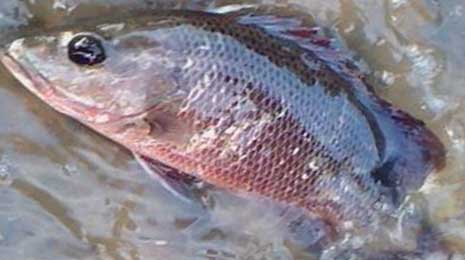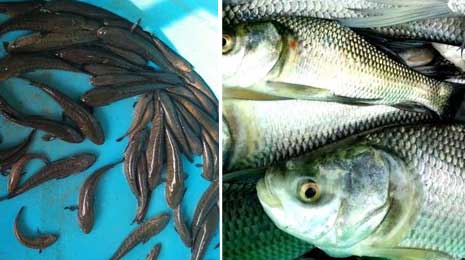Mekkara Fish Hatchery
Mekkara Fish Hatchery, Companyppadi - Thekkumpadam Road, Near Kerala Agriculture University, Mannuthy, Thrissur, 680652
Since : 2009
Mekkara Fish Hatchery, Companyppadi - Thekkumpadam Road, Near Kerala Agriculture University, Mannuthy, Thrissur, 680652
Since : 2009
Biofloc fish farming is a revolutionary aquaculture technique that enhances fish production by creating a beneficial microbial community in the farming water. This method is gaining popularity in Thrissur due to its sustainability, cost-effectiveness, and ability to produce high yields in small spaces. In this article, we will explore what biofloc fish farming is, its availability in Thrissur, and what customers can expect from biofloc fish farming in this region.
Biofloc fish farming is an innovative method that utilizes a biofloc system to enhance water quality and fish growth. This system relies on the development of a microbial community, known as biofloc, which consists of bacteria, algae, and other microorganisms. These microorganisms help in breaking down waste products such as uneaten feed and fish excreta, converting them into protein-rich feed that can be consumed by the fish. This process not only maintains water quality but also reduces the need for water exchange and external feed, making the system highly sustainable and cost-effective.
The key components of a biofloc system include:
Biofloc fish farming is especially suitable for species like tilapia, shrimp, and catfish, which thrive in this environment. The method is highly efficient, allowing farmers to achieve higher production rates in limited spaces compared to traditional fish farming methods.
Thrissur, known for its vibrant cultural heritage and agricultural productivity, is rapidly embracing biofloc fish farming. Several factors contribute to the growing adoption of this method in the region:
With these supports in place, Thrissur is becoming a hub for biofloc fish farming, attracting both seasoned and new aquaculture practitioners.
As biofloc fish farming gains traction in Thrissur, customers—whether they are consumers or farmers—have specific expectations regarding the practice. Here are some of the key expectations:
Consumers expect high-quality fish that are healthy, fresh, and free from harmful chemicals. Biofloc fish farming meets these expectations by providing a controlled environment where fish can grow without the need for antibiotics or harmful chemicals. The use of natural feed from biofloc ensures that the fish are nutritious and safe for consumption.
With growing awareness about environmental sustainability, customers are looking for eco-friendly products. Biofloc fish farming is seen as a sustainable practice because it minimizes water usage and reduces waste discharge. This method aligns with the global push towards sustainable food production systems, making it an attractive option for environmentally conscious consumers.
Farmers and investors are always on the lookout for cost-effective farming methods. Biofloc fish farming is highly efficient, requiring less water and feed compared to traditional methods. The reuse of waste products within the system reduces operational costs, making it a financially viable option for many farmers in Thrissur.
To successfully implement biofloc fish farming, farmers expect comprehensive training and ongoing technical support. Local authorities and private enterprises in Thrissur are meeting this demand by offering workshops, online resources, and on-site assistance. This support helps farmers troubleshoot issues and optimize their production.
For biofloc fish farming to be profitable, farmers need consistent access to markets where they can sell their produce at fair prices. Customers expect a steady supply of biofloc-farmed fish, and local markets in Thrissur are increasingly catering to this demand. Ensuring market access and fair pricing is crucial for the long-term success of biofloc fish farming in the region.
Biofloc fish farming offers several benefits over traditional fish farming methods. These include improved water quality, reduced feed costs, higher fish density, and enhanced biosecurity. The system promotes a natural and sustainable way of farming, leading to healthier and faster-growing fish.
To start a biofloc fish farming setup in Thrissur, you need to acquire the necessary equipment, such as aerators, tanks, and biofloc additives. It is advisable to attend training programs and workshops offered by local agricultural departments or private enterprises. Securing technical support and understanding the local regulations will also help in establishing a successful farm.
Tilapia, shrimp, and catfish are among the best-suited species for biofloc systems in Thrissur. These species thrive in the high-density environment of biofloc systems and benefit from the protein-rich feed generated by the microbial community.
Yes, the Kerala government provides various subsidies and financial assistance programs to encourage biofloc fish farming. These may include grants for equipment purchase, training programs, and low-interest loans. It is recommended to check with local agricultural offices for the latest information on available support.
Common challenges in biofloc fish farming include maintaining water quality, managing the carbon-nitrogen ratio, and preventing disease outbreaks. Regular monitoring and maintenance of the system, along with access to technical support, can help address these challenges effectively.

Thrissur, Mannuthy

Thrissur, Mannuthy